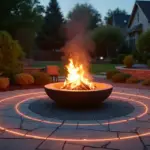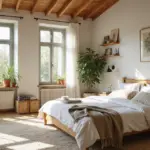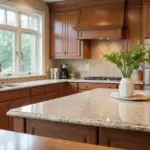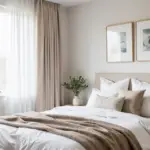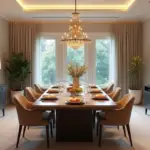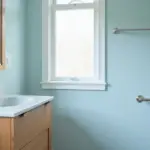Is your kitchen feeling a little…blah? The heart of your home, the kitchen, should be a space that’s both functional and inspiring. And what’s the backbone of any kitchen’s functionality and style? Your cabinets!
More than just storage, kitchen cabinets are the workhorses and visual anchors of your space. But navigating the world of kitchen cabinet design can feel overwhelming. From endless style options to material choices and organizational dilemmas, where do you even begin?
Fear not, aspiring kitchen renovators! I’ve unlocked the secrets to creating a kitchen you’ll absolutely adore. Let’s dive into these 19 game-changing kitchen cabinet design secrets that will transform your kitchen from ordinary to extraordinary.
1. Decoding Cabinet Styles: From Shaker to Slab and Everything In Between
Cabinet styles are primarily defined by door and drawer front designs. Understanding the nuances between framed vs. frameless, flat vs. raised panels, and edge detailing is your first step toward a kitchen that reflects your personal taste. Shaker cabinets offer clean lines and versatility, while slab cabinets deliver minimalist appeal. Raised-panel cabinets bring traditional elegance, and glass-front options add vintage charm.

The structure beneath the style matters too. Framed cabinets offer a traditional look with more door style options, while frameless (European-style) cabinets maximize interior space with a sleek, modern aesthetic. Your choice ultimately depends on your kitchen’s overall design direction.
Here’s the inside story: you can mix styles for a truly custom look. Consider incorporating open shelving alongside traditional cabinets to display decorative items and break up long stretches of cabinetry. This blend creates visual interest while maintaining functionality.
2. Material Matters: Choosing the Right Wood, MDF, or Plywood for Your Cabinets
The material you choose for your kitchen cabinets influences both aesthetics and longevity. Solid wood brings natural beauty and refinishing potential but comes with a higher price tag and susceptibility to humidity changes. MDF (Medium-Density Fiberboard) offers impressive stability and takes paint beautifully but weighs more and doesn’t love moisture. Plywood strikes a balance with good strength, stability, and moderate cost.

Your material choice affects both budget and durability. Painted cabinets often benefit from MDF’s smooth surface, while stained cabinets showcase solid wood’s natural grain. For the best of both worlds, consider a hybrid approach – solid wood for frames and doors, with MDF or plywood for less visible components.
The tricky part is balancing aesthetics with practicality. Before making your final decision, test samples for scratch resistance, water resistance, and appearance in your kitchen’s lighting. This hands-on approach ensures you’ll love your cabinets for years to come.
3. Finish First: Mastering Paint, Stain, and Lacquer for Cabinet Perfection
The finish you choose for your kitchen cabinets defines the final look and protects your investment. Paint provides full coverage with limitless color options, perfect for achieving a specific palette. Stain penetrates the wood, enhancing natural grain and adding warmth. Lacquer delivers a durable, clear coating that protects wood and adds sheen.

Surface preparation is paramount for any finish. Thorough cleaning, sanding, and priming ensures professional, long-lasting results. Avoid common mistakes like inadequate preparation, applying finish too thickly, insufficient drying time, using the wrong tools, or working in poorly ventilated spaces.
What really matters here is getting that perfect finish that both protects and beautifies. Try experimenting with two-tone cabinet finishes, using different colors or stains for upper and lower cabinets. This approach creates visual interest while allowing you to incorporate both bold and neutral elements in your kitchen cabinet design.
4. Hardware Harmony: Selecting Knobs and Pulls That Elevate Your Kitchen Style
Cabinet hardware might seem like a small detail, but it has a significant impact on your kitchen’s style and functionality. For modern kitchens, sleek, minimalist hardware in stainless steel or matte black works beautifully. Traditional spaces shine with ornate knobs and pulls in antique brass or oil-rubbed bronze. Transitional kitchens offer flexibility to mix and match.

Beyond style, consider the practical aspects of hardware. Knobs are generally more affordable and simpler, ideal for smaller cabinets. Pulls offer a more substantial grip and modern aesthetic, perfect for larger drawers where leverage matters. Size and placement are crucial – knobs should be centered, while pulls should be proportional to cabinet size.
“Hardware is the jewelry of your kitchen – it should complement your cabinet design without overwhelming it.”
Let that sink in for a moment. Hardware provides an opportunity to add personality through color, texture, or unexpected materials like leather-wrapped pulls or ceramic knobs. This small investment can dramatically transform your kitchen cabinet design.
5. Maximize Every Inch: Genius Pull-Outs and Storage Solutions for Cabinet Organization
Kitchen cabinet organization transforms chaotic caverns into havens of order. Pull-out solutions like shelves for pots and pans, trash and recycling bins, spice racks, and corner cabinet systems eliminate dead space and make everything accessible. For upper cabinets, tiered shelves, pull-down mechanisms, and under-cabinet organizers maximize functionality.

When selecting organizational solutions, assess your specific storage challenges, measure cabinet interiors carefully, consider weight capacities, and align with your budget. The right combination of solutions will be tailored to your cooking style and kitchen habits.
- Utilize vertical dividers in deep drawers for baking sheets and cutting boards
- Install pull-out shelves to increase usable storage by up to 50%
- Add toe-kick drawers for flat items like baking sheets
- Incorporate tall narrow pull-outs for oils and spices beside the refrigerator
- Use drawer dividers for cutlery and pantry items
The game-changer happened as I realized that well-organized cabinets not only look better but fundamentally change how you interact with your kitchen. The right storage solutions make cooking more efficient and enjoyable – a true kitchen cabinet design victory.
6. Layout Logic: Optimizing Your Kitchen Flow with Smart Cabinet Placement
Cabinet placement directly impacts kitchen efficiency. Strategic positioning around the “work triangle” (sink, refrigerator, and cooktop) minimizes steps and wasted time. Storing dishes near the dishwasher, or spices near the cooktop, streamlines tasks and makes cooking more enjoyable.

In larger kitchens, consider work zones instead of a strict triangle, focusing on task-specific areas. Avoid common mistakes like blocking pathways with open doors, placing frequently used items in hard-to-reach spots, neglecting corner solutions, or overlooking natural light. For maximum storage and accessibility, utilize vertical space with ceiling-height cabinets and incorporate pull-outs and dividers.
Picture it this way: a well-designed kitchen cabinet layout is like a choreographed dance – everything flows smoothly, with no wasted movements. Before finalizing your design, map out workflows on paper and physically walk through meal preparation to identify potential bottlenecks.
7. Color Confidence: Embracing Bold Hues and Timeless Neutrals for Kitchen Cabinets
Color sets the stage for your entire kitchen. When considering bold cabinet colors, think about your kitchen’s size (smaller spaces often benefit from lighter shades), existing elements like appliances and countertops, and your personal style. Always test samples in your actual kitchen lighting before committing.

Timeless neutrals offer enduring appeal. White cabinets create a bright, clean look. Grays provide sophistication and versatility. Greige delivers warmth while remaining neutral. Natural wood tones can also function as neutrals while adding organic texture. For balance, pair bold cabinets with neutral walls and countertops, or use bold colors only on lower cabinets or an island.
What unfolded next was a revelation about color psychology in kitchen cabinet design. I discovered that painting upper cabinets a light neutral and lower cabinets a darker hue grounds the space while adding visual interest. This approach satisfies both the desire for color and the need for timelessness.
8. Open vs. Closed Shelving: Striking the Right Balance in Your Kitchen Cabinet Design
The debate between open and closed shelving centers on both aesthetics and practicality. Open shelving creates a lighter, airier feel, visually expands space, and puts beautiful dishware on display. However, it requires constant organization and exposes items to dust and grease. Closed cabinets conceal clutter, protect contents, and offer better structural support, though too many can feel cramped.

A balanced design strategically combines both approaches. Use open shelving for display and frequently accessed items, while reserving closed cabinets for less attractive necessities and pantry staples. Consider your kitchen aesthetic – modern kitchens often embrace open shelving, while traditional spaces might favor closed cabinets.
The breakthrough came when I realized that the perfect kitchen cabinet design isn’t about choosing sides in this debate – it’s about thoughtful integration of both styles. Before committing to open shelving, declutter your kitchen and assess what items you’d be comfortable displaying. This honest inventory helps determine how much open shelving you actually need.
9. Light It Up: Integrating Under-Cabinet and In-Cabinet Lighting for Ambiance and Function
Lighting is an essential element often overlooked in cabinet design. Under-cabinet lighting provides crucial task illumination for food prep areas, while in-cabinet lighting makes finding items easier and showcases decorative pieces in glass-front cabinets. Both create a warm, inviting atmosphere, especially with dimmers.

LED lighting has become the gold standard due to energy efficiency, longevity, low heat output, and color temperature options. Placement is crucial – under-cabinet lights should sit toward the front edge to illuminate countertops, while in-cabinet lights work best at the top or sides, aiming downward. Consider hardwiring for a cleaner look or battery-powered options for easier installation.
The missing piece in many kitchen cabinet designs is strategic lighting. Color-changing LED strips under cabinets can create dynamic ambiance, while motion sensors or door-activated switches add convenience. Before installation, use painter’s tape to mock up light placement to ensure optimal coverage and avoid glare.
10. Taming Kitchen Chaos: Pro Tips for Organizing Drawers and Cabinets Like a Pro
Well-organized cabinets save time, reduce food waste, maximize space, improve kitchen efficiency, and create a calmer cooking environment. To declutter effectively, empty drawers and cabinets completely, group similar items, and ask yourself: Have I used this in the past year? Do I have multiples? Is it broken?

Avoid common organization mistakes like overcrowding, neglecting vertical space, skipping drawer dividers, inconvenient item placement, and infrequent decluttering. Pull-out organizers make accessing items stored in the back much easier, while implementing the “first in, first out” (FIFO) method for food storage minimizes waste.
“The average person spends about one year of their life searching for misplaced items – many of which are likely in the kitchen!”
Do you see how huge that is? Proper kitchen cabinet design isn’t just about aesthetics – it’s about reclaiming lost time and creating a more peaceful cooking experience. The right organizational systems transform how you interact with your kitchen daily.
11. Budget-Savvy Cabinets: Achieving High-End Look on a Realistic Budget
Updating existing cabinets offers cost-effective transformation. Refacing replaces doors and drawer fronts while keeping existing boxes. Painting changes color and style dramatically. New hardware provides significant visual update. Decorative trim adds a custom look affordably.

When choosing new budget cabinets, consider melamine and laminate for durability and style at lower prices than solid wood. Particleboard or MDF work well for painted cabinets. Research RTA (Ready-to-Assemble) cabinets for potentially high quality at lower costs. Strategic design choices like upgraded hardware, under-cabinet lighting, and crown molding elevate budget cabinets to look high-end.
My experience went like this: I discovered that incorporating open shelving not only reduces cabinet costs but adds visual interest. When styled with attractive dishes and decorative items, these shelves become design features rather than budget compromises. This approach to kitchen cabinet design delivers both savings and style.
12. Splurge-Worthy Upgrades: Investing in High-Quality Cabinet Features That Last
While budget-consciousness matters, certain cabinet features justify investment. Soft-close hinges and drawer slides prevent slamming and reduce wear. Solid wood construction, especially for drawer boxes and frames, offers superior durability. Dovetail drawer construction provides exceptionally strong joints. Pull-out shelves maximize accessibility, and high-quality finishes resist scratches and stains.

To determine necessary upgrades, assess your needs and priorities. Consider cooking frequency, noise sensitivity, and kitchen style. Set a budget and prioritize upgrades addressing your biggest pain points. The long-term benefits include extended cabinet lifespan, improved functionality, enhanced kitchen aesthetics, and cost-effectiveness by avoiding frequent repairs.
The crucial element is balancing immediate budget constraints with long-term value. Before committing to upgrades, request samples of finishes and hardware to assess quality and appearance in your kitchen’s lighting. This hands-on approach ensures your investment in kitchen cabinet design delivers lasting satisfaction.
13. Custom vs. Stock Cabinets: Navigating the Choices to Suit Your Needs and Style
The choice between custom and stock cabinets fundamentally impacts your kitchen renovation. Stock cabinets are pre-made in standard sizes and styles, offering affordability and quick availability but limited options. Custom cabinets are built to exact specifications, allowing unique designs and personalized features but at higher cost with longer lead times. Semi-custom cabinets bridge the gap, combining stock components with limited customization.

Your decision should consider budget, timeline, kitchen layout, and desired aesthetic. A standard kitchen with budget constraints might do well with stock cabinets, while complex layouts or specific design visions might require custom or semi-custom options.
You could compare it to clothing: stock cabinets are off-the-rack, semi-custom are tailored off-the-rack, and custom are bespoke. For a smart approach to kitchen cabinet design, consider mixing cabinet types – use stock for standard base units and custom for statement islands or specialty features.
14. Door Style Details: From Flat Panel to Raised Panel – Choosing Your Cabinet Personality
Cabinet door styles define your kitchen’s personality. Flat panel doors offer minimalist, contemporary appeal. Raised panel doors bring traditional, formal elegance. Shaker doors provide versatile, timeless style. Glass-front doors showcase dishware and add visual lightness. Beadboard doors deliver rustic, cottage charm.

Your door style choice impacts both aesthetics and budget. Flat panel doors are generally most cost-effective, Shaker doors fall mid-range, and raised panel doors often cost more due to intricate construction. When choosing, consider your home’s architecture, existing décor, kitchen size, and natural light availability.
The heart of the matter is that door style sets the tone for your entire kitchen. Create a mood board with images of different cabinet door styles and kitchen designs to visualize your preferred aesthetic. Then, incorporate decorative hardware that complements your chosen style to enhance the overall kitchen cabinet design.
15. The Finishing Touch: Understanding the Impact of Crown Molding and Trim on Cabinets
Crown molding and trim elevate kitchen cabinets from functional to fabulous. Crown molding installed at cabinet tops bridges the gap to the ceiling, adding height and elegance. Various trim types serve different purposes: light rail molding conceals under-cabinet lighting, base molding finishes cabinet bottoms, panel molding creates raised or recessed effects, and scribe molding fills gaps.

Choosing the right style requires considering your kitchen’s overall design. Modern kitchens suit simple, clean-lined molding. Traditional kitchens benefit from more ornate profiles. Farmhouse kitchens shine with Shaker-style trim. The molding should complement cabinet style, and ceiling height influences appropriate molding size.
Here’s what’s happening when you add these elements: your kitchen cabinet design instantly gains polish and sophistication. For an extra special touch, incorporate LED strip lighting behind crown molding or light rail to create a warm, inviting ambiance that transforms your kitchen after dark.
16. Smart Accessories: Spice Racks, Drawer Dividers, and More for Ultimate Cabinet Functionality
Smart cabinet accessories transform kitchen organization. They maximize space, prevent clutter, improve workflow, and make cooking more enjoyable. Essential accessories include spice racks (pull-out, tiered, or door-mounted), drawer dividers, pull-out shelves, lazy susans for corners, tray dividers, roll-out waste bins, cutlery inserts, pot organizers, and under-sink solutions.

To choose the right accessories for your kitchen, consider size and layout, specific storage needs, cabinet dimensions, budget, personal style, and ease of installation. These seemingly small additions dramatically impact daily kitchen use.
- Pull-out spice racks with integrated lighting for enhanced visibility
- Custom drawer dividers sized precisely to your utensils and cookware
- Vertical tray dividers for baking sheets and cutting boards
- Roll-out waste and recycling bins concealed behind cabinet doors
- Corner cabinet solutions that eliminate wasted space
My breakthrough came when I realized that thoughtful accessories aren’t just nice-to-have extras – they’re essential components of effective kitchen cabinet design. Before purchasing, empty and measure cabinets precisely, accounting for any hardware or obstructions that might affect fit.
17. Eco-Friendly Cabinets: Sustainable Materials and Practices for a Greener Kitchen
Sustainability is increasingly important in kitchen design. Eco-friendly cabinet options include reclaimed wood (with unique character and history), bamboo (rapidly renewable), FSC-certified wood (from responsibly managed forests), agricultural fiber boards (like wheatboard), recycled content materials, and low-VOC finishes and adhesives for better indoor air quality.

Sustainable practices extend beyond materials. Consider local sourcing to reduce transportation emissions, durable construction for longer lifespan, energy-efficient manufacturing, waste reduction during production, and responsible disposal of old cabinets through donation or deconstruction.
Things took an interesting turn when I discovered that eco-friendly kitchen cabinet design doesn’t require compromise. Open shelving made from reclaimed wood can display sustainable kitchenware while reducing the need for upper cabinets. This approach is both environmentally responsible and visually striking – a win-win for conscious design.
18. Appliance Integration: Seamlessly Blending Refrigerators, Dishwashers, and More into Cabinetry
Appliance integration creates a unified, streamlined kitchen aesthetic. Integrating refrigerators, dishwashers, microwaves, ovens, coffee machines, and wine refrigerators into cabinetry maximizes space efficiency and creates a cohesive look. Integration methods include panel-ready appliances (accepting cabinet panels), built-in appliances (flush fit), overlay panels, and fully concealed options.

While integration offers visual benefits, consider potential drawbacks: higher cost for both appliances and custom cabinetry, more complex installation, potentially difficult repair access, and challenging appliance replacement if dimensions change. Careful planning mitigates these concerns.
Let me paint you a picture: imagine walking into a kitchen where appliances blend seamlessly with cabinetry, creating a clean, uncluttered look that puts the focus on beautiful materials and thoughtful design. This approach to kitchen cabinet design elevates the entire space. Start by selecting appliances first, then design cabinetry around them to ensure perfect fit.
19. Long-Lasting Beauty: Essential Tips for Cabinet Maintenance and Cleaning to Preserve Your Investment
Proper maintenance ensures your kitchen cabinets remain beautiful for years. Clean weekly to remove dust, grease, and spills, with deeper cleaning quarterly. Use gentle solutions like warm water and mild dish soap, avoiding abrasive cleaners, bleach, and ammonia. For stubborn stains, equal parts water and white vinegar often works well.

Different finishes require specific care. Painted cabinets need gentle cleaners and minimal scrubbing. Wood cabinets benefit from wood-specific products. Laminate cabinets clean easily with damp cloths and mild cleansers. Protect all cabinets from moisture by promptly wiping spills, ensuring good ventilation, using shelf liners under sinks, and addressing water damage immediately.
The ripple effects of proper maintenance are enormous. Assemble a dedicated cabinet cleaning kit with microfiber cloths, gentle cleaners, and appropriate polishes to make regular care simple. This small investment of time protects your larger investment in kitchen cabinet design and ensures your kitchen remains beautiful for years to come.
Conclusion: Your Dream Kitchen Awaits
Transforming your kitchen with game-changing cabinet design secrets creates a space that’s both beautiful and supremely functional. Whether you opt for budget-friendly updates or splurge-worthy features, thoughtful planning and attention to detail make all the difference.
The kitchen cabinet design choices you make impact not just aesthetics but how you interact with your space daily. From material selection to organizational systems, each decision contributes to creating a kitchen that truly works for your lifestyle.
Armed with these 19 secrets, you’re now equipped to design a kitchen you’ll love for years to come – a space that reflects your style and enhances every culinary adventure. So go ahead, unleash your inner designer and transform your kitchen into the heart of your dream home!

